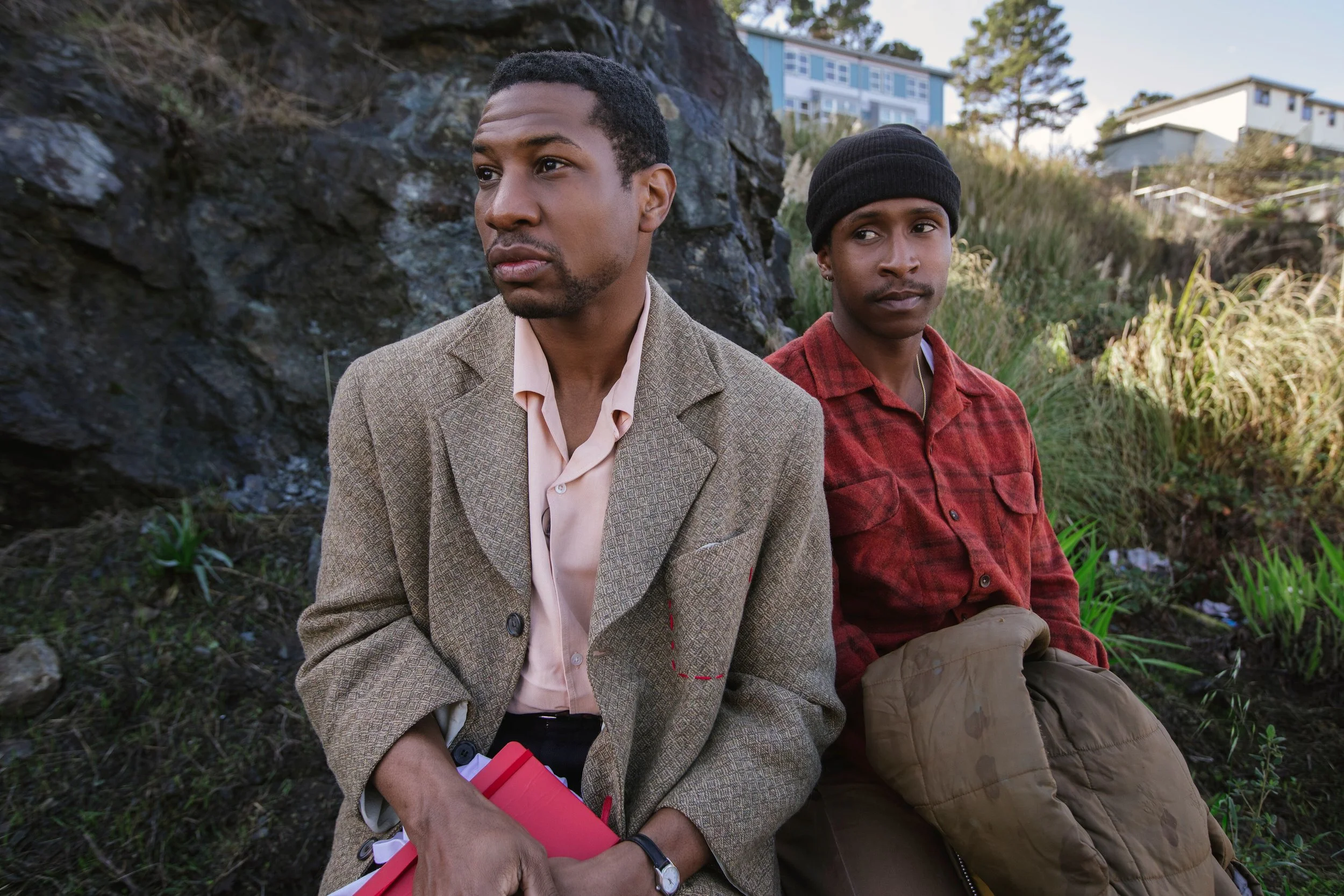The Last Black Man in San Francisco: The scorched aftershock of gentrification played out as serio-comedy
By Liam Lacey
Rating : B-plus
You can’t go home again - especially when gentrification has driven property prices into the gasping stratosphere, as they have in The Last Black Man in San Francisco, a critics’ favourite and prize winner at Sundance.
The debut feature from director and co-writer Joe Talbot (who is white) focuses on two African American men in their 20s, Jimmie (the director’s friend and story collaborator, Jimmie Fails) and Mont (Jonathan Majors). Both have come to adulthood feeling like aliens in their own home town.
Mont and Jimmie (Jonathan Majors and Jimmie Fails) ponder their future in a priced-out San Francisco
Like two Bay Area-set films from last year - Blindspotting and Sorry To Bother You – the film explores the traumatic impact of rapid racialized gentrification in the Bay area.
The confines of San Francisco (which musician Paul Kantner once defined as “49 square miles surrounded by reality”) is a special laboratory of social extremes. It has more millionaires and billionaires than New York City but also the biggest homeless population per capita in the United States.
The tech sector’s influx of predominantly young, white men (San Francisco writer Rachel Solnit has dubbed “Fratistan”), have displaced lower income communities. African-Americans have been disproportionately hit by gentrification, with a population that has dwindled from more than 13 percent of the population in 1970, down to five today,, making it a prime example of the whitewashing of American inner cities.
Talbot’s film is about the aftershock, presented in a tone that is ingratiating and dislocating, somewhere between Napoleon Dynamite and The Florida Project. Cinematographer Adam Newport-Berra’s mixture of sight gags and soulful images brings a fresh eye to an overphotographed city, and the strikingly eclectic score from Emile Mosseri (dashes of opera, electronica and hippie golden-oldies) interweaves the laidback past and anxious present.
At the center of the film is a small, serio-comic quest: Jimmie works as an orderly in an elder care facility and is stuck in a state of involuntary arrested development. He swoops around town on his skateboard, sometimes with his friend, Mont riding behind.
Mont, who works behind a fish counter, is an aspiring playwright. They each wear the same outfit every day – Jimmie in a red plaid shirt, Mont in a formal brown blazer. Neither has a girlfriend or boyfriend. Jimmie, who also doesn’t own a phone, sleeps on Mont’s bedroom floor, in the home Mont shares with his grandfather (Danny Glover). In one paradigmatic scene, Jimmie, Mont and his grandfather, sit on a sofa watching the 1949 San Francisco-set film noir classic D.O.A. on TV, while Mont narrates for the action for the grandfather, who is blind.
Jimmie clings to the past in another way. He makes regular visits to a gorgeous skinny wedding cake of a Queen Anne-style mansion, with a witch’s hat turret, porch columns, fish-scale shingles and dashes of red and gold trim. Jimmy sneaks onto the property to touch up the paint job and tend the garden. When he’s interrupted by the middle-aged white couple who live there, they tell him to get lost but, as good San Francisco liberals, never call the police.
Jimmie’s attachment to the house is almost fetishistic, tied to his sense of identity. When a group of tourists on Segways appear in front of the house, the guide (punk rocker Jello Biafra) begins enumerating its 19th-century architectural flourishes. Jimmie insists the house was hand-built by his grandfather, in 1946. That would be shortly after the internment of San Francisco’s Japanese-American population (which the film briefly refers to) leaving their homes to an influx of African-Americans, migrating from the South to work in the wartime ship yards.
Jimmie’s obsession with his childhood home is fanned anew when the resident couple is forced to leave the house as the result of an estate battle. He makes a self-abasing attempt to get a loan to buy it, despite its $4 million price tag. He then ends up with a Plan B: move into the home as a squatter, with the vague intention of establishing squatter’s rights.
His quest to furnish and renovate his home takes us from one San Francisco location to another, and brief cameo performances by Jimmie’s far-strewn family. We travel the fringes of the town, and witness a series of flavourful cameos, by Jimmie’s aunt (Tichina Arnold), his angry father (Rob Morgan) and a mother he hasn’t seen in a long time (played by the actor’s actual mother).
The script, by Joe Talbot and Rob Richert, is the thinnest thread in this tapestry, punctuated by repetitive scenes where characters are in self-consciously performative mode: A street preacher stands on a box and rants, even if no one seems to be listening. A Greek chorus of African-American men hang out on a corner, trash talking and practicing male aggression. The final big-but-predictable twist, takes the form of a play Mont stages in the house, which feels a like performance-art parody.
Though the film’s dialogue rarely pops, there’s a memorable exchange when Jimmie riding on a bus in which two young women are talking about San Francisco, and one says she hates it. “You don’t get to hate a place unless you love it,” insists Jimmie, a statement which is objectively untrue (e.g. I hate rat-infested sewers, full stop). But it speaks to the film’s tone of scorched romanticism.
Socio-economic shocks aside, The Last Black Man in San Francisco, is a love story many can relate to, about being betrayed and getting your heart crushed by a two-timing, social-climbing city.
The Last Black Man in San Francisco. Directed by Joe Talbot. Written by Joe Talbot and Rob Richert. Starring: Jimmie Fails, Jonathan Majors, Danny Glover.. The Last Black Man in San Francisco plays at the TIFF Bell Lightbox.

